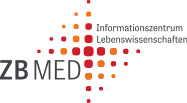Estudo dos métodos de previsão de demanda aplicado em uma empresa de auditorias médicas
Palabras clave:
Previsão de demanda, combinação de previsões, auditoria médica.Resumen
A previsão de demanda é um dos principais fatores para a eficiência do gerenciamento das organizações, afetando diretamente a lucratividade do negócio. Quanto maior a acurácia da previsão de demanda melhor será o desempenho empresarial. Neste ideal, métodos de combinação de previsões e suas previsões individuais vêm sendo constantemente comparados. O objetivo principal deste trabalho é averiguar como as redes neurais artificiais (RNA) e o modelo de combinação por regressão se comportam frente a uma série de dados reais (divergentes), métodos encontrados como melhores no estudo de simulação (séries estacionárias) em Mancuso (2013). Aplicado aos dados de demanda dos serviços na área de auditoria médica, três técnicas de previsão foram avaliadas: RNA, Box-Jenkins (ARIMA), alisamento exponencial; e três combinações foram consideradas: média simples (aritmética), variância mínima e regressão. Os resultados demonstram a superioridade dos métodos de combinação, em termos precisão, comparados às previsões individuais.Acombinação por regressão obteve as previsões mais acuradas, mas as previsões obtidas com RNA não apresentaram o mesmo destaque.
Demand forecasting is a major factor for the efficiency of the management of organizations, directly affecting business profitability. Higher accuracy of the prediction, better the business performance. In this ideal, methods of combining individual forecasts and their forecasts are being constantly compared. The main objective of this work is to investigate how artificial neural networks (ANN) and regression model combination behave in the face of a series of real data (divergent), better methods found in the simulation study (stationary series) in Mancuso (2013). Applied to demand data services in the area of medical audit, three forecasting techniques were evaluated: ANN, Box-Jenkins (ARIMA), exponential smoothing, and three combinations were considered: simple average (arithmetic mean), minimum variance and regression. The resultsdemonstrate the superiority of combination methods, in terms precision, compared to individual forecasts.The combining regression obtained the most accurate predictions, but the predictions obtained with RNA did not show the same prominence.
Descargas
Citas
ABDEL-AAL, Radwan., and AL-GARNI, Ahmed. Forecasting monthly electric energy consumption in eastern Saudi Arabia using univariate time-series analysis. Energy,1997, vol. 22, no. 11, p. 1059-1069.
ARMSTRONG, Jeff S., and COLLOPY, Fred. Error Measures for Generalizing About Forecasting Methods: Empirical Comparisons. International Journal of Forecasting,1992, vol. 8, no. 1, p. 69-80.
ARMSTRONG, Jeff S., and BRODIE, Roderick J. Forecasting for Marketing. [A. do livro] Graham J. Hooley e Michael K. Hussey. Quantitative Methods in Marketing. London: International Thompson Business Press, 1999, p. 92-119.
BATES, John M., and GRANGER, Clive WJ. The Combining of Forecasts. Operational Research Quarterly, 1969, vol. 20, no. 4, p. 451-468.
CALÔBA, Guilherme Marques., CALÔBA, Luiz Pereira., and SALIBY, Eduardo. Cooperação entre Redes Neurais Artificiais e técnicas ‘clássicas’ para previsão de demanda de uma série de vendas de cerveja na Austrália. Pesquisa Operacional, 2002, vol. 22, no. 3, p. 345-358.
CHEN, Kuan-Yu. Combining linear and nonlinear model in forecasting tourism demand. Expert Systems with Aplications, 2011, vol.38, p. 10368-10376.
CHEN, Kuan-Yu., and WANG, Cheng-Hua. A hybrid SARIMA and suport vector machines in forecasting the production values of the machinery industry in Taiwan. Expert Systems with Aplications, 2007, vol. 32, p. 254-264.
CLEMEN, Robert T. Combining forecasts: A review and annotated bibliography. International Journal of Forecasting, 1989, vol. 5, p. 559-583.
FIGLEWSKI, Stephen., and Urich, Thomas. Optimal Aggregation of Money Suply Forecasts: Accuracy, Profitability and Market Efficiency. The Journal of Finance,1983, vol. 38, no 3, p. 695-710.
FOGLIATTO, Flávio S., et al. Previsão de demanda por energia elétrica: método e aplicação.In XXV Encontro Nacional de Eng. de Produção (ENEGEP),p. 3100-3107. ( 2005: Porto Alegre), [2005].
HIBON, Michèle., and Evgeniou, Theodoros. Combine or not to combine: selecting among forecasts and their combinations. International Journal of Forecasting, 2005, vol. 21, p. 15-24.
HSIAO, Cheng., and WAND, Shui Ki. Comparison of forecasting methods with an aplication to predicting excess equity premium. Mathematics and Computers in Simulation, 2011, vol. 81, p. 1235-1246.
HYNDMAN, Rob J., and KOEHLER, Anne B. Another look at measures os forecast accuracy. International Journal of Forecasting,2006, vol. 22, p. 284-299.
JEONG, Dae., and KIM, Young-Oh. Combining single-value streamflow forecasts: A review and guidelines for selecting techniques. Journal of Hydrology, 2009, vol. 377, p. 284-299.
KERKKÂNEN, Annastiina., KORPELA, Jukka., and HUISKONEN, Janne. Demand forecasting errors in industrial context: Measurement and impacts. Int. J. Production Economics, 2009, vol. 118, p. 43-48.
KONING, Alex J., et al. The M3 competition: Statistical tests of the results. International Journal of Forecasting, 2005, vol. 21, p. 397-409.
MAKRIDAKIS, Spyros., WHEELWRIGHT, S., and HYNDMAN, Rob J. 1998.Forecasting: Methods and Aplications. 3ª ed. New York : John Wiley & Sons, 1998.
MANCUSO, Aline Castello Branco. Uma investigação do desempenho de métodos de Combinação de Previsões: simulado e aplicado. Dissertação de Mestrado, UFRGS/ PGEP, Porto Alegre, 2013.
MARTINEZ, Raydonal Ospina., and ZAMPROGNO, Bartolomeu. Comparação de algumas técnicas de previsão em análise de séries temporais. Revista Colombiana de Estadística, 2003, vol. 26, no. 2, p. 129-157.
MARTINS, Vera Lúcia. Comparações de combinação de previsões correlacionadas e não correlacionadas com as suas previsões individuais: um estudo com séries industriais. Dissertação de Mestrado, UFRGS/ PGEP, Porto Alegre, 2011.
MARTINS, Vera Lúcia., and WERNER, Liane. Forecast combination in industrial series: A comparison between individual forecasts and its combinations with and without correlated errors. Expert Systems with Aplications, 2012, vol. 39, p. 11479-11486.
MENEZES, Lilian M., BUNN, Derek W., and TAYLOR, James W. Review of guidelines for the use of combined forecasts. European Journal of Operational Research, 2000, vol. 120, p. 190-204.
MORETTIN, Pedro Alberto., and TOLOI, Clelia Maria de Castro. Análise de Séries Temporais. 2ª ed. São Paulo: Edgard Blucher, 2006. ISBN 852-12-0389-6.
NASCIMENTO, Francirene Maria Sousa. A auditoria médica como referência para melhoria da qualidade da prestação dos serviços de saúde. . Dissertação de Mestrado. Universidade Anhanguera/Uniderp, Belém, 2010.
HOSPITAL GERAL DE JUÍZ DE FORA. Manual de Auditoria de Contas Médicas. Paes, Pedro Paulo Lima., and Maia, Juliana Ribeiro.Juiz de Fora (MG), 2005 [consultado em abril, 2014]. Disponível em: http://dsau.dgp.eb.mil.br/arquivos/PDF/qualidade_gestao/manual_Auditoria.pdf.
PALIWAL, Mukta., and KUMAR, Usha A. A Neural networks and statistical techniques: A review of aplications. Expert Systems with Aplications, 2009, vol. 36, p. 2-17.
PONCELA, Pilar., et al. Forecast combination through dimension reduction techniques. International Journal of Forecasting, 2011, vol. 27, p. 224-237.
STOCK, James H., and WATSON, Mark W. Combination Forecasts of Output Growth in a Seven-Country Data Set. Journal of Forecasting, 2004, vol. 23, p. 405-430.
TAYLOR, James W. Exponential smoothing with a damped multiplicative trend. International Journal of Forecasting, 2003, vol. 19, p. 715-725.
THEIL, Henri., and SCHOLES, Myron. Forecasting Evaluation Based on a Multiplicative Decomposition of Mean Square Errors. Econometrica, 1967, vol. 35, no. 1, p. 70-88.
WANG, Fu-Kwun., and CHANG, Ku-Kuang. Adaptive neuro-fuzzy inference system for combined forecasts in a panel manufacturer. Expert Systems with Aplications, 2010, vol. 37, p. 8119-8126.
WEATHERFORD, Larry R., and KIMES, Sheryl. A comparison of forecasting methods for hotel revenue management. International Journal of Forecasting, 2003, vol. 19, p. 401-415.
WERNER, Liane., and RIBEIRO, José Luís Duarte. Previsão de Demanda: Uma aplicação dos Modelos Box-Jenkins na área de Assistência Técnica de Computadores Pessoais. Gestão & Produção, 2003, vol. 10, no. 1, p. 47-67.
XU, Xiaoyan., QI, Yuqing., and HUA, Zhongsheng. Forecasting demand of commodities after natural disasters. Expert Systems with Aplications, 2010, vol. 37, p. 4313-4317.
ZHANG, Guoqiang Peter. Time series forecasting using a hybrid ARIMA and neural network model. Neurocomputing, 2003, vol. 50, p. 159-175.
Descargas
Publicado
Número
Sección
Licencia
Revista Ingeniería Industrial by Revista Ingeniería Industrial is licensed under a Creative Commons Reconocimiento 4.0 Internacional License. Creado a partir de la obra en revistas.ubiobio.cl/index.php/RI/. Puede hallar permisos más allá de los concedidos con esta licencia en http://revistas.ubiobio.cl/index.php/RI/about/

















